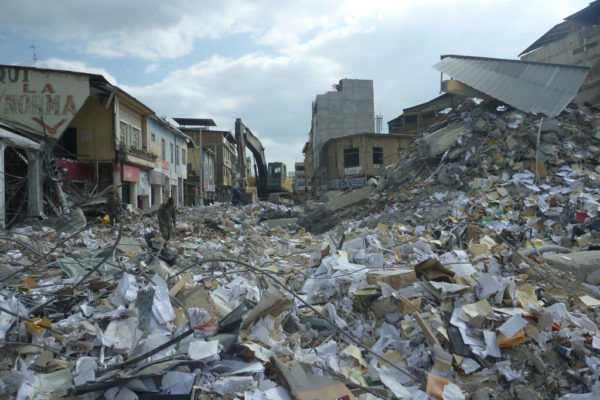Post Disaster: Rehabilitation or Reconstruction?
- Venansius Jourdan

- Oct 13, 2020
- 3 min read
Updated: Feb 15, 2021
Disaster management requires 3 phases of action to help minimize the havoc of natural disasters. Those phases includes: prevention and mitigation, preparedness, and recovery. The programmes designed within the managements aim to avoid disaster, reduce its impact or help recover its losses. While prevention and mitigation includes pre disaster programmes that help reducing losses before natural disaster happens, response and recovery include post disaster initiatives with purpose of reconstruction or rehabilitation of affected victims and area from natural hazards (gktoday). The response phase includes isolating affected victims in a safe area where basic necessities are being provided and served, or even assistance rebuilding the affected areas after the event occurred. This phase started after natural hazards had subsided. In addition to disaster recovery planning, mitigation, or reduction loss activities can also improve communities education and resiliency by removing potential damage before disaster occurs. Post disaster programmes include various activities that needed to be considered, those of which are listed below: (nws.weather.gov)
Post-disaster recovery plans
Business and government continuity plans
Temporary shelter and housing plans
Utility recovery and reconstruction plans

In the aftermath of disaster, affected countries needed a fair amount of incentives and fundings for research purposes or significant resources that will be donated. These actions can be accomplished through comprehensive analysis which accounts for damage and losses that is created by the event respectively. For instance, the United nations development goals has been linked with the World Bank in 2008 to develop and use common assessment in terms of post-disasters terrain. The strategy to this collaboration during post-disaster is to analyze the extent of disaster impact, needs of recovery, restoring infrastructure, and rehabilitating victims affected by the event (UNDP).
The two main actions emphasized during post-disasters are rehabilitation and also reconstruction. Both have different behavioral approaches and some countries utilize its method in different orders. As reported countries are appealed by the act of rehabilitating after disasters due to several benefits that could be withdrawn. Some argued that rehabilitation improves Government ethics of work in terms of disaster management so that individuals can have better access to other essential post disaster services. This situation happened in Haiti, it was reported that what victims needed after the earthquake hit the area, government was abled to supply those necessities rapidly through rehabilitation process. As victims are gathered into one place (rehabilitation) and was handled in that specific area. Donations allocated will be distributed swiftly, as all victims are gathered in one place (NCBI). But on the other hand, some also argued that reconstruction could be prominent in succeeding the natural disaster event. As reported, reconstruction plays an integral role in correlating it with post-disaster recovery. Although the correlation exists, it invites more challenges than having to create rehabilitation. Post-disaster reconstruction are pressured with time, communication and transportation difficulties. Without being said, this situation happened during the Nepal earthquake where government needed a great participation for volunteers to send donations. However due to transportation and access it became challenging for volunteers to enter the district. (Tandfonline)
Video 1: Manny pacquiao "Safe steps compilation" after and before natural disasters
In conclusion, I would strongly recommend the government to do rehabilitation first before assisting or accommodating the process of reconstruction. This is due to the fact that reconstructions take a certain amount of time to rebuild the district that was affected by the catastrophic events. As an example, in Indonesia when Rob flood in Palu happened the government of Indonesia posted a lot of challenges especially when it comes to giving basic necessities to the victim as compared to what happened in Merapi, where the access to the district is much faster due to the geographical location. Which means that the local government should have rehabilitated victims first, since it's much faster and would minimize the increasing casualties after the disaster occurred. Moreover, gathering victims in one place would mean that donation distributed will be much faster since victims are situated in a specific area and handled directly as medical staff has been prepared beforehand. Creating rehabilitation place also means that before disaster occurred, staff and assistance has been prepared beforehand. Hence when disaster occurred, preventive measures and handling procedures are instantly initiated and ready to handle victim directly.



Comments